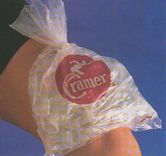 Ice no more says the newest research about how to recover from most sprains and strains faster.
Ice no more says the newest research about how to recover from most sprains and strains faster.
Sprain an ankle, apply the RICE formula with ice, rest, elevation and compression. That has been the rule until now.
One of our oldest educational brochures recommends that you use ice for pain and swelling and heat for minor aches and stiffness. Surprising new information says ice is more harmful than helpful, and may actually delay or injure an area.
An article in the Journal Sports Medicine from 1986 adapted from Gabe Mikin MD had suggested that the actual effect ice has on injured tissues is to increase the permeability of the lymphatic system which is supposed to carry excess fluids back to the cardio vascular system. In other words, fluids begin to pour in the wrong direction with the use of ice back into the injured area, increasing pain, pressure and swelling. This is not what has been believed or taught to many healthcare providers over the years.
Since then, more journal articles have been written that suggest we as healthcare providers need to change what we are telling our patients.
The American Journal of Sports Medicine in June 2013 suggested that while cooling delayed swelling, it did not improve recovery from muscular damage and a summary of 22 scientific articles published in the American Journal of Sports Medicine in 2004 found no evidence that ice and compression speeded healing over compression alone, although ice with exercise may marginally heal ankle sprains.
Applying ice to injured tissue, we now understand shuts off blood flow to the injured area which is needed to bring in the healing cells of inflammation. Since the tissue does not restore its blood flow for many hours, this decreased blood flow may cause tissue to die off from the lack of blood flow and may even cause permanent nerve damage. This information was published in 2014.
A new paradigm is now emerging called active recovery which must accomplish the following:
- Bringing in nourishment and other supplies to an injured area.
- The removal of waste.
- The production and release of myokines. Read more about this in the Journal of Applied Physiology here.
- The remodeling of repaired tissue.
Here is how to apply this new concept of active recovery.
- Movement or light strides on a bike to get movement into an injured area as tolerated.
- Do not be too aggressive on an injured area with active recovery. Too much can actually further damage tissue and strain other parts of the body that are getting used when the injured part is not functioning.
How to treat an ankle sprain using the new paradigm.
- No ice, elevate and move the area.
- Anything that naturally helps draw fluids such as kinesio tape can help, but is not essential.
- Movement of the area as soon as possible, and place weight in the area as soon as possible, but be careful, too much can cause more damage.
- As the area heals, restore movement and reteach mechano receptors using balance and other methods to restore the bodies normal mechanisms of movement and ability to sense the joint properly.
These same ideas can be applied to back sprains and other sprained joints as well. The basic idea is that we now are avoiding ice, we bear weight as soon as possible and movement is the key to appropriate recovery.
There are a number of internet sites that are now recommending we change what we are doing. Here are some different point of view but the newest information is the same, other than immediately after an injury, forget the ice and get into gentle movement as tolerated.
http://www.macleans.ca/society/the-end-of-the-ice-age/ https://www.ncbi.nlm.nih.gov/pmc/articles/PMC3396304/ https://www.ncbi.nlm.nih.gov/pmc/articles/PMC522152/ https://runnersconnect.net/running-injury-prevention/ice-running-injuries/Paradigm Shifts: Use of Ice & NSAIDs Post Acute Soft Tissue Injuries (Part 1 of 2)